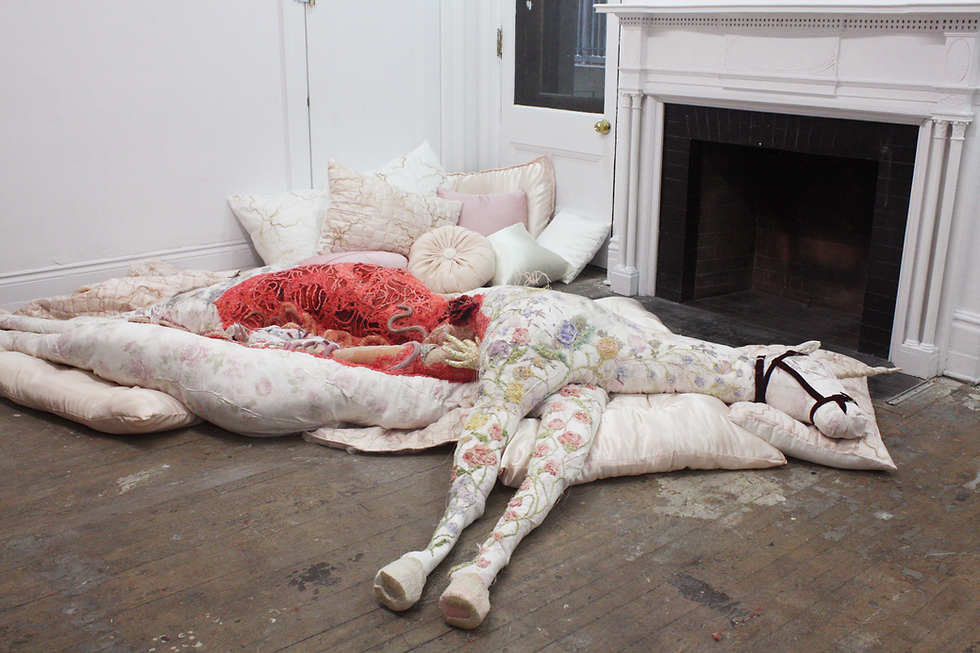As part of L’heure du conte,
Pangée is delighted to present Danser avec son fantôme [Dancing With Her Ghost], Elisabeth Perrault’s new in situ installation.
–
For men to instruct themselves, they must be seduced by aestheticism, but how can one present the image of death as enjoyable?
– Arnaud-Éloi Gautier d’Agoty
By the languid and sensual contenance of her embellished body and inherent fragility, the anatomical Venus offers herself whole, conquered. Mythified, adored and desired, this Venus is consecrated as a symbol of beauty, purity and innocence. These very qualities, despite themselves, were those that had aroused within men––cloaked in the scientific rationality of their day––the desire to manipulate her body, to depossess it, and to contemplate within it––in the very depts of its entrails––life that is created within. In that sens, it is through the brutal and romantic contrast between life and death, between divine beauty and macabre curiosity, that Elisabeth Perrault succeeds, no matter the cost, in capturing life.
Perrault has addressed, since her very beginnings, subject matter that tends to elicit a certain discomfort. Accordingly, she edifies the body into a dissectable object and reveals that which ordinarily remains invisible. Making use of techniques proper to handicraft, the artist meticulously works textile in order to give her subjects life, putting forth nuances that convey intimacy, vulnerability and sensitivity. With her in situ installation, she profusely adorns her amplified subjects with flowers and pearls. By way of her work, she continues to feed and shape the collective imaginary surrounding the anatomical Venus. The gaze Perrault now directs onto the docility of the gutted body is feminine. As such, the artist puts into dialogue the symbolic charge of the anatomical Venus through history with her own interpretation, all the while establishing a critical distance.
Perrault also evokes with this installation the contrast between life and death, another theme carried throughout the artist’s work. She achieves this by lining the diaphanous skin of her life-size sculptures with dried and faded flowers. They offer themselves as a still life or a memento mori, and they contrast with the vibrantly coloured flowers that the artist hand-embroiders to emphasize a return to life. Perrault’s hundreds of embroidered flowers embody the cyclical nature of our world, that which withers and is reborn, with a tireless will to live.
Text by Maude Raymond
Translated by Natacha Boucher



